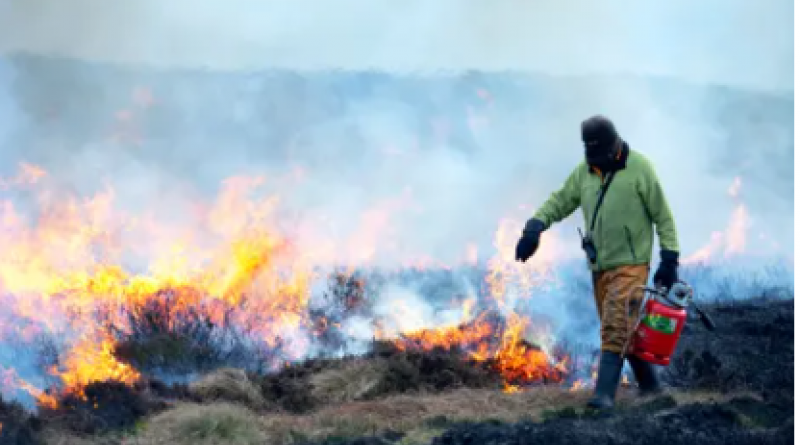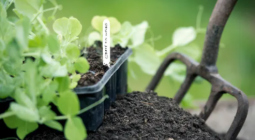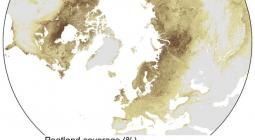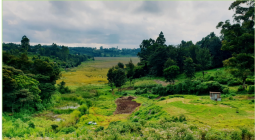Just 124 people own most of England’s deep peat – its largest carbon store

New report says burning and draining of peatland by grouse moor estates and others adding to climate disaster
Just 124 landowners own the majority of England’s deep peat – its single largest carbon store – new analysis has found.
From the low-lying wetlands of the Fens, to the bogs of the North York Moors, 450,000 hectares (1m acres) of peat soils store 584m tonnes of carbon, according to Natural England, equivalent to the annual emissions from 540 coal-fired power stations in the US.
England’s peatlands emit around 11m tonnes of CO2 into the atmosphere every year because of degradation and draining. Improving their management and encouraging their restoration are part of the UK’s net zero strategy, and the government is aiming to restore 280,000 hectares of peatland in England by the middle of the century.
A new report by Guy Shrubsole, environmental campaigner and author of Who Owns England?, has revealed that 60% of England’s peatlands are owned by a small group of people. In the uplands, 249,000 hectares of peat are owned by 101 grouse moor estates, while 20 landowners oversee 43,706 hectares of lowland peat in the Fens, about one-third of the total, according to the analysis.
Alongside large areas owned by the Duchy of Cornwall, Forestry Commission and the Ministry of Defence, just 124 landowners control more than 450,000 hectares of England’s peat.
Shrubsole, a former policy and campaigns coordinator with Rewilding Britain, said: “England’s single largest carbon store is owned by a vanishingly small number of landowners, whose mismanagement of this ecosystem by burning and draining it is currently adding to the climate disaster.
“The public urgently needs to challenge these landowners to protect and restore our peatlands, so that they help fix climate breakdown rather than making it worse. And the UK government must tighten its peatland-burning legislation, so that landowners can no longer set fire to our carbon.”

Last week, the John Muir Trust, a charity set up to protect wild places in Britain, said taxing deer and grouse estates for failing to ensure their land properly locked up carbon dioxide could play a crucial role in fighting the climate crisis.
In response to the analysis, the Moorland Association, which represents grouse moor owners in England, said its members protected, restored and enhanced deep peat on their land, which required careful management for sustainable grouse shooting.
It defended burning, saying: “Controlled burning in the winter is a crucial tactic for moorland management which removes excess vegetation but does not affect the underlying peat. Managed burning helps prevent and limit the spread of wildfires through the creation of firebreaks and reducing the burnable fuel loads.”
A Defra spokesperson said it had been clear about the need to phase out rotational burning of protected blanket bog and had brought forward protective legislation, while supporting landowners with restoration.
15 November 2021
The Guardian




